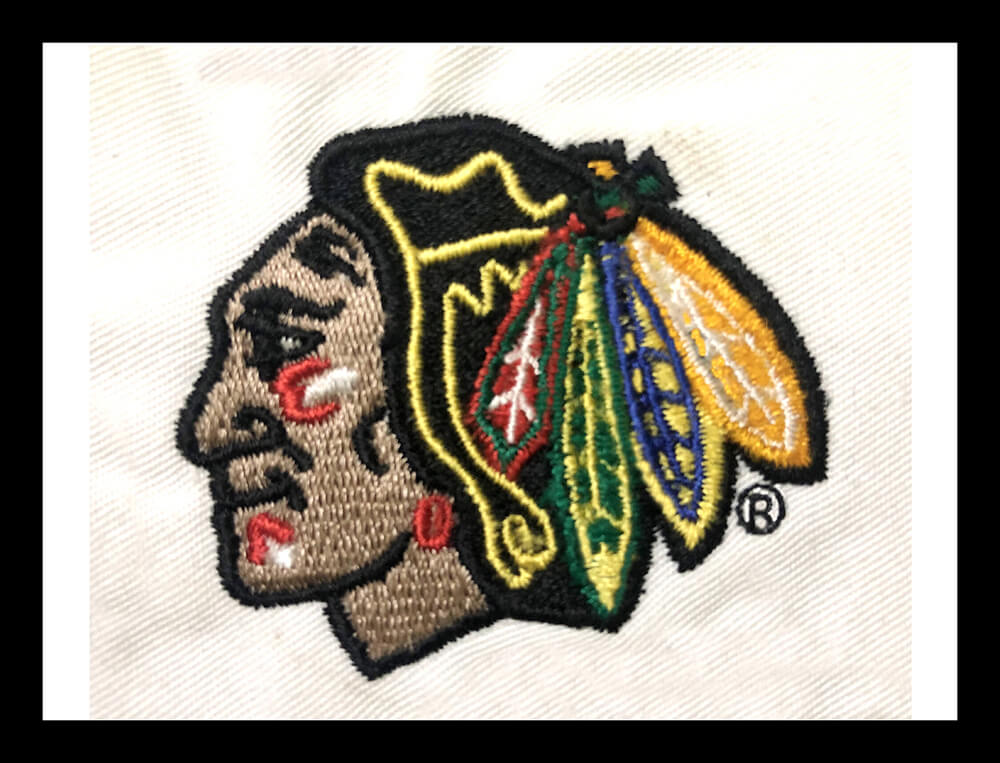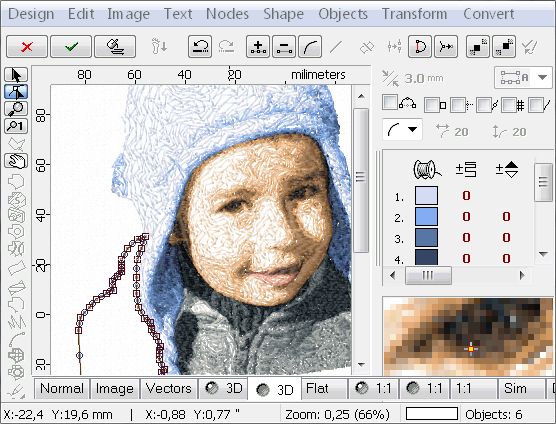Mastering the Embroidery Digitizing Refine: Your Ultimate Guide
Embroidery digitizing is a precise craft that needs precision and proficiency to translate elaborate styles into digital styles for device embroidery. As artisans begin on this trip to understand the needlework digitizing process, an extensive understanding of the fundamentals establishes the foundation for excellence.

Recognizing Needlework Digitizing Essentials
Needlework digitizing essentials create the structure whereupon detailed layouts are converted right into machine-readable layouts for exact sewing. This first action in the needlework digitizing procedure is crucial for guaranteeing that the final embroidered item is a loyal depiction of the initial style. Comprehending embroidery digitizing basics entails grasping vital principles such as stitch kinds, stitch direction, thickness, rug, and pull compensation.
Stitch kinds play a crucial function in figuring out the visual and textural outcome of the stitched style. By selecting the appropriate stitch type, whether it be satin, fill, or running stitch, digitizers can attain the desired effect and boost the general quality of the embroidery. In addition, stitch direction affects the flow and dimension of the layout, while density identifies the spacing and coverage of the stitches.
In addition, rug stitching gives stability to the design by protecting the fabric and protecting against distortion throughout the embroidery procedure. Pull settlement is another vital consideration to neutralize the all-natural propensity of fabric to contract when stitched. Mastering these needlework digitizing basics is essential for developing professional-quality stitched products.
Selecting the Right Digitizing Software Program
Selecting the proper digitizing software program is a vital choice that significantly impacts the effectiveness and top quality of the needlework digitizing process. Digitizing for Embroidery. When choosing the best digitizing software program, it is essential to think about aspects such as the intricacy of layouts you plan to create, the user-friendliness of the software, the level of customer assistance used, and the compatibility with your needlework equipment
There are numerous digitizing software options available on the market, ranging from fundamental programs for novices to sophisticated software application for expert digitizers. Some prominent options include Wilcom EmbroideryStudio, Hatch Embroidery Software Application, and PulseID. These software provide a broad variety of tools and features to help you develop detailed layouts effortlessly.
Prior to choosing, it is recommended to discover the different software alternatives via cost-free trials or trials to establish which one finest fits your needs. In addition, reviewing evaluations and seeking recommendations from knowledgeable digitizers can supply important insights right into the staminas and weaknesses of each software plan (Digitizing for Embroidery). By very carefully assessing your needs and contrasting the features of various digitizing software application, you can make an informed selection that boosts your embroidery digitizing workflow
Digitizing Devices and Techniques

Optimizing Layout Setup for Needlework
Grasping the details of layout setups is essential in accomplishing ideal cause the embroidery digitizing process, structure upon the structure laid by recognizing digitizing devices and techniques. When optimizing layout setups for embroidery, it is necessary to think about elements such as stitch type, density, padding, draw payment, and registration. Sew kind choice impacts the general look of the layout, with choices like look at these guys satin, fill, and running stitches providing different appearances and results. Density refers to the spacing and density of stitches, impacting the design's coverage and durability. Correct rug stitching offers security and prevents textile distortion, particularly for complex layouts or on elastic materials. Draw compensation readjusts for material stretch throughout stitching, ensuring exact design duplication. Registration settings line up different aspects of the style precisely, preserving overall layout integrity. By fine-tuning these layout settings, embroiderers can improve the quality and accuracy of their embroidered productions.

Troubleshooting Common Digitizing Issues
When running into typical digitizing concerns during the needlework procedure, it is necessary to recognize the source and implement efficient remedies quickly. One typical trouble is stitch density problems, where stitches might be too thick, causing the material to tighten, or too sparse, causing spaces in the layout. Adjusting the stitch thickness setups in the digitizing software program can help solve this concern.
An additional frequent obstacle is thread breaks during the needlework procedure. This can take place as a result of various reasons such as inaccurate tension settings, boring needles, or making use of low-grade string. Ensuring proper maintenance of the embroidery device, including regular needle changes and tension modifications, can reduce the incident of string breaks.
Additionally, style enrollment mistakes can lead to misaligned aspects within the needlework style. Inspecting the style positioning in the digitizing software application and making needed modifications before stitching can aid in preventing this concern. By resolving these usual digitizing concerns without delay and properly, you can make certain a smoother needlework process and top notch completed products.
Conclusion
In conclusion, understanding the needlework digitizing procedure needs a solid understanding of the fundamentals, the right choice of software program, and expertise of tools and techniques. Maximizing style settings and troubleshooting usual digitizing problems are important steps in making certain top notch embroidery results. By adhering to these steps diligently, one can accomplish precision and effectiveness in the digitizing process.